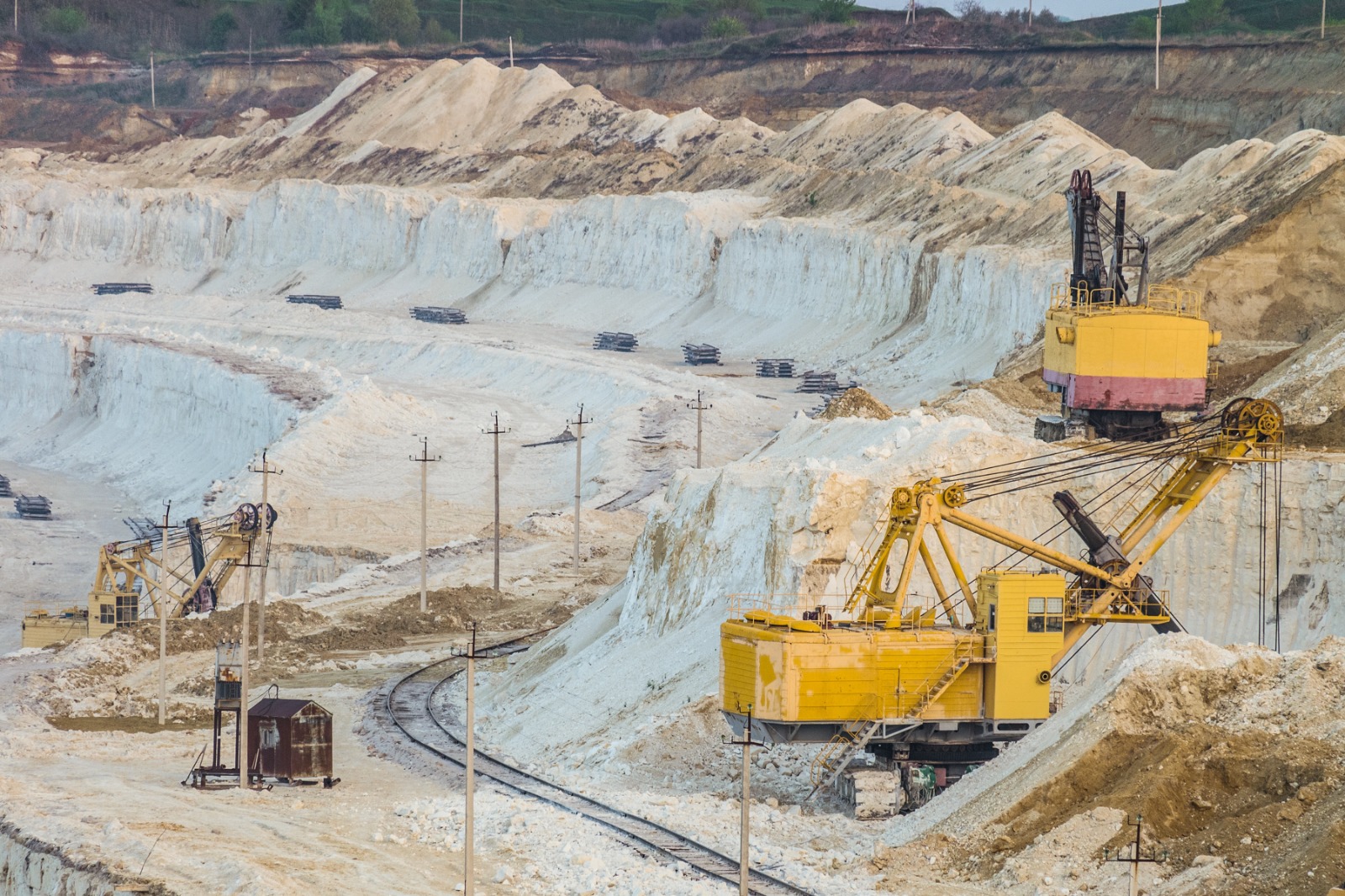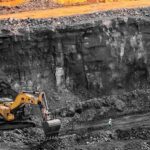
Tokenized minerals
Everything you need to know about tokenized minerals – how they work and the benefits of investing in this digital asset class.
The world of digital assets and non-fungible tokens has increased its scope significantly in recent times, with new asset classes and opportunities arising for investors.
One such class is that of tokenized minerals. Essentially, this enables you to invest in fractional ownership of mining assets, which historically have been difficult to access for everyday investors.
Key to the accessibility of tokenized minerals is smart contracts, which are created and maintained on blockchain technology for transparent and secure transactions.
Here, we explain everything you need to know about tokenized mineral investing and introduce you to the many benefits of investing in this new and exciting digital asset.
What are tokenized minerals?
Tokenized minerals provide investors with the opportunity to invest in fractional ownership of mining assets such as gold, diamonds, cobalt, and other minerals.
The process requires the conversion of a physical asset’s ownership rights into digital tokens, which can be traded on a blockchain network.
This enables investors to trade ownership of these tokens and has the potential to revolutionize the way that natural assets are managed and distributed.
Examples of tokenized minerals include:
- Gold
- Silver
- Platinum
- Petroleum
- Natural gas
- Oil
- Lithium
- Rare earth elements
Thanks to the creation of tokenized minerals, you now have the opportunity to buy a fraction of a digital form of these commodities, something that was unheard of just a few years ago. Most of the barriers to entry of this type of investment have been removed, making it much easier to own a slice of the pie to diversify your digital asset investments.
But how exactly do mineral-backed tokens work? Well, you need to understand two key concepts to fully grasp how these digital assets are traded – the blockchain and smart contracts.
Investing in mineral-backed tokens – how it works
If you’re relatively new to crypto investing or digital asset transactions, the concept of tokenized minerals may take a little getting used to.
The easiest way to look at it is that tokenized minerals represent real-world mining commodities like gold, silver, and platinum.
The ownership of these tokenized minerals is logged and maintained in a distributed ledger, most commonly a blockchain.
When created, the tokens correspond to a fraction of the total value of the mineral. In essence, it gives you the opportunity to own a fraction of a digital version of a gold bar or a barrel of oil.
You can safely secure this token on your digital device with the option to claim it through the companies that issue it at a later date. You can also trade it among other investors.
Mineral-backed tokens are part of a broader picture of commodity assets that include everything from digital art to real estate. Broadly, these are known as non-fungible tokens (NFTs).
To invest in mineral-backed tokens, you need to head to a centralized exchange like Binance. You can then buy the tokens and store them in your wallet. It’s a very similar process to buying and storing crypto.
The key role of blockchain in mineral-backed tokens
The advent of blockchain technology has revolutionized the tokenization of physical assets. It is a decentralized platform that enables the creation and maintenance of mining assets, providing investors with the opportunity to trade them safely and securely.
As such, blockchain is the driving force behind mineral-backed tokens. Specifically, it is capable of tokenizing minerals and metals, including the fundamental data submitted by all parties involved with the trade. This makes the tokens on the blockchain secure from tampering.
As part of the process, blockchain creates and maintains an unchangeable record of the tokenized minerals. Therefore, there is an immutable chain of custody in the data within the system, enabling the trade of these tokens.
Fundamentally, blockchain facilitates the very concept of every trade. Every actor using the blockchain agrees to the rules, and the blockchain essentially locks this agreement in place in a tamper-proof system. It cannot be duplicated or forged, meaning these tokens represent real-world assets like gold, petroleum, or diamonds.
Understanding smart contracts and tokenized minerals
To understand the structure and maintenance of blockchain-based mineral-backed tokens, you also need to be aware of smart contracts.
These contracts are automated, self-executing processes written into the code that is stored on the blockchain. Their presence means that no intermediaries or middlemen are required to execute trades, as everything is 100% automated.
Smart contracts are responsible for making tokenized minerals accessible, transparent, and much cheaper than their real-world counterparts.
Though they are integral to the trading of tokenized minerals, smart contracts are not exempt from technical vulnerabilities, which is actually one of the most significant risks attached to trading in this form of digital asset.
The benefits of investing in tokenized minerals
Given the increasing popularity of tokenized mineral investing, it’s worth looking at the benefits that you can expect from this form of digital asset:
Enhanced accessibility
One of the biggest benefits of tokenized mineral investing is that it makes fractional ownership of commodities much more accessible. Historically, it has been difficult for investors to achieve fractional ownership of minerals due to prohibitively high administration costs. Tokenized minerals do not have this barrier to entry.
Increased security
The fact that tokenized minerals are created and maintained on blockchain technology makes them extremely secure, transparent, and immutable. This significantly reduces the risk of fraud and increases transparency and trust within the market among investors.
Easier and timelier transactions
The tokenization of minerals eliminates intermediaries and middlemen, as everything is maintained on the blockchain. This makes it much easier to conduct transactions and it also speeds up purchases and settlements. As a result, the entire process is much easier and timelier for buyers and sellers.
Increased liquidity
Thanks to blockchain, tokenized minerals are not bound by physical limitations and can be traded 24/7. This global accessibility throughout the calendar year increases the market liquidity and is a huge benefit of this type of trading.
New markets and new opportunities
The tokenization of minerals creates new markets for natural resources, which may, in the long term, help with sustainable development and could reduce the poverty and insecurity of those involved in mining.
| ✅Diversification of digital assets | From the perspective of investors, the availability of tokenized minerals is a great way to diversify an investment portfolio. If you hold various coins, you can now invest in a fraction of digital minerals, too, offering your portfolio greater resilience in the face of market instability. |
| ✅Democratized mining investment | Finally, tokenized mining is ushering in a new era of democratized mining investment. The removal of previous barriers to entry makes it much easier for anyone – from any country – to invest in mining commodities that were previously reserved for the wealthy. As such, the future of commodities investing is exciting and truly open to new opportunities for all. |
Challenges to be mindful of before investing in tokenized minerals
Of course, with any pioneering investment opportunity, there are some potential challenges attached to tokenized mining investments, including:
| ❌Smart contract vulnerabilities | Self-executing contracts are fundamental to mineral-backed tokens, with the terms of the contracts directly written into the code. The biggest issue with smart contracts is that they are vulnerable to technical issues, which may lead to financial losses, as has been the case in the crypto industry. |
| ❌Lack of a concerted legal framework | Though the transparency and accessibility of tokenized minerals is beneficial, it also means that there isn’t a defined legal framework surrounding the trading of these assets. This is true of most digital assets, with different countries adopting their own legal frameworks for trade. Navigating the differences in legality may be problematic for some people and is one of the barriers facing entry into the space. |
Conclusion
Today, investing in tokenized minerals is appealing to a broad spectrum of investors. If you already hold crypto, investing in tokenized minerals or other commodities is a great way to diversify your investment portfolio.
If you have an investment account on a digital asset exchange, you can easily trade tokenized minerals with minimal fuss, as these tokens are accessible, transparent, and secure.
The biggest risk facing this type of investment is smart contract vulnerability, which isn’t something new to crypto investors.
Overall, given the significant advantages highlighted in this article, now is a great time to find out more about mineral-backed tokens and consider adding them to your digital asset portfolio for greater resilience and potential growth.
References
- https://www.spglobal.com/marketintelligence/en/news-insights/podcasts/ir-in-focus-ep-10
- https://www.linkedin.com/pulse/digging-digital-gold-unleash-power-tokenization-mining-asset-investment
- https://www.brickken.com/en/post/tokenization-of-natural-resources#:~:text=Tokenization%20of%20natural%20resources%20refers,traded%20on%20a%20blockchain%20network.
- https://creditcoin.org/blog/tokenized-commodities/


